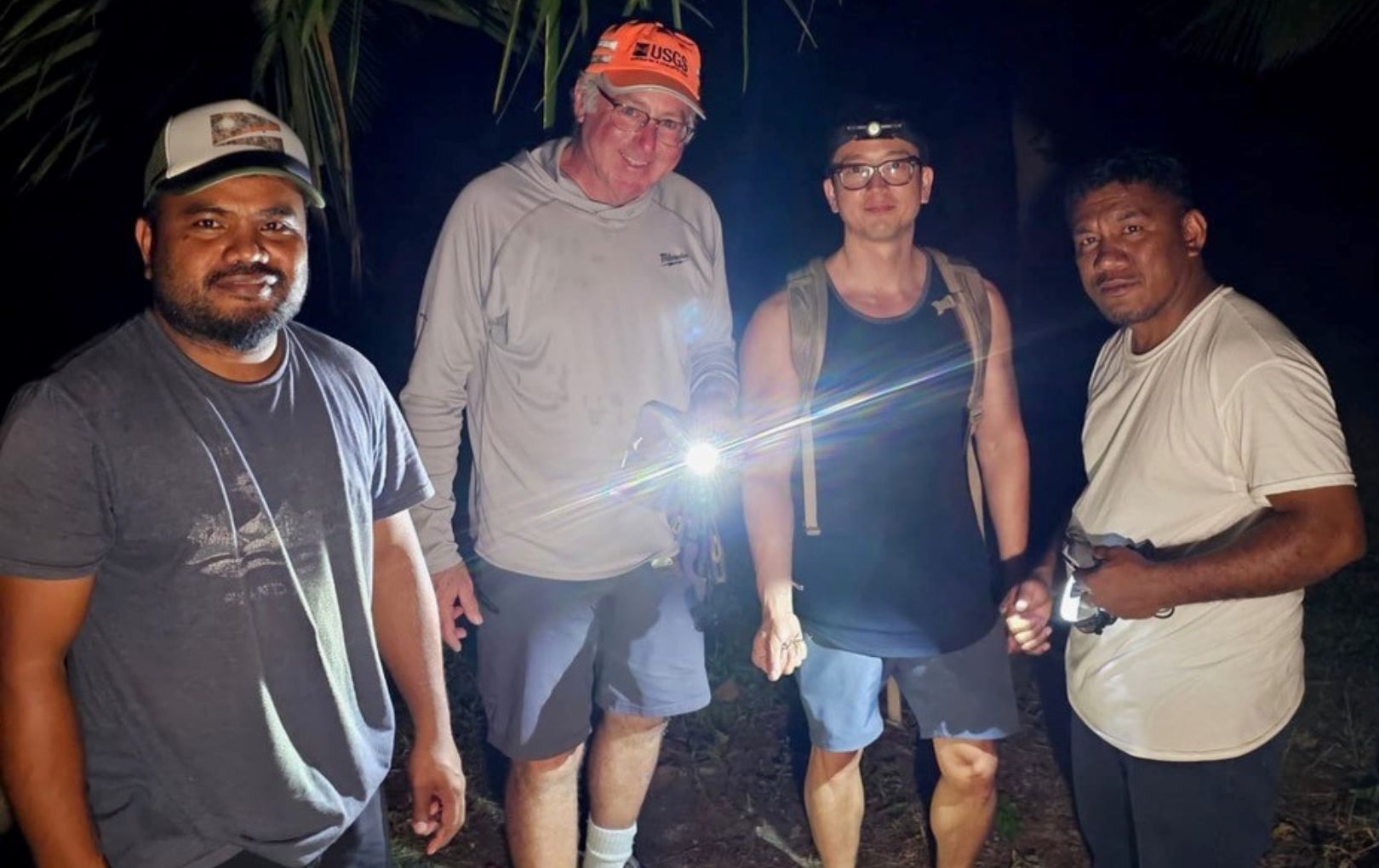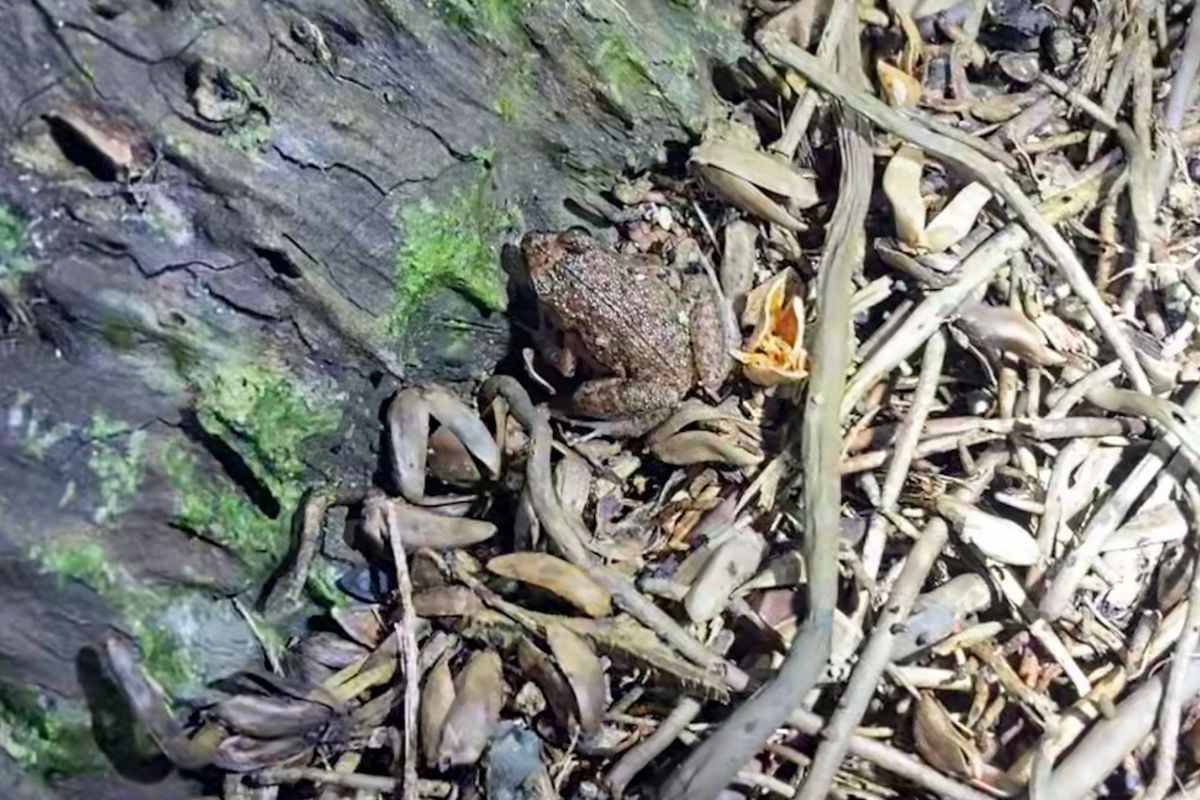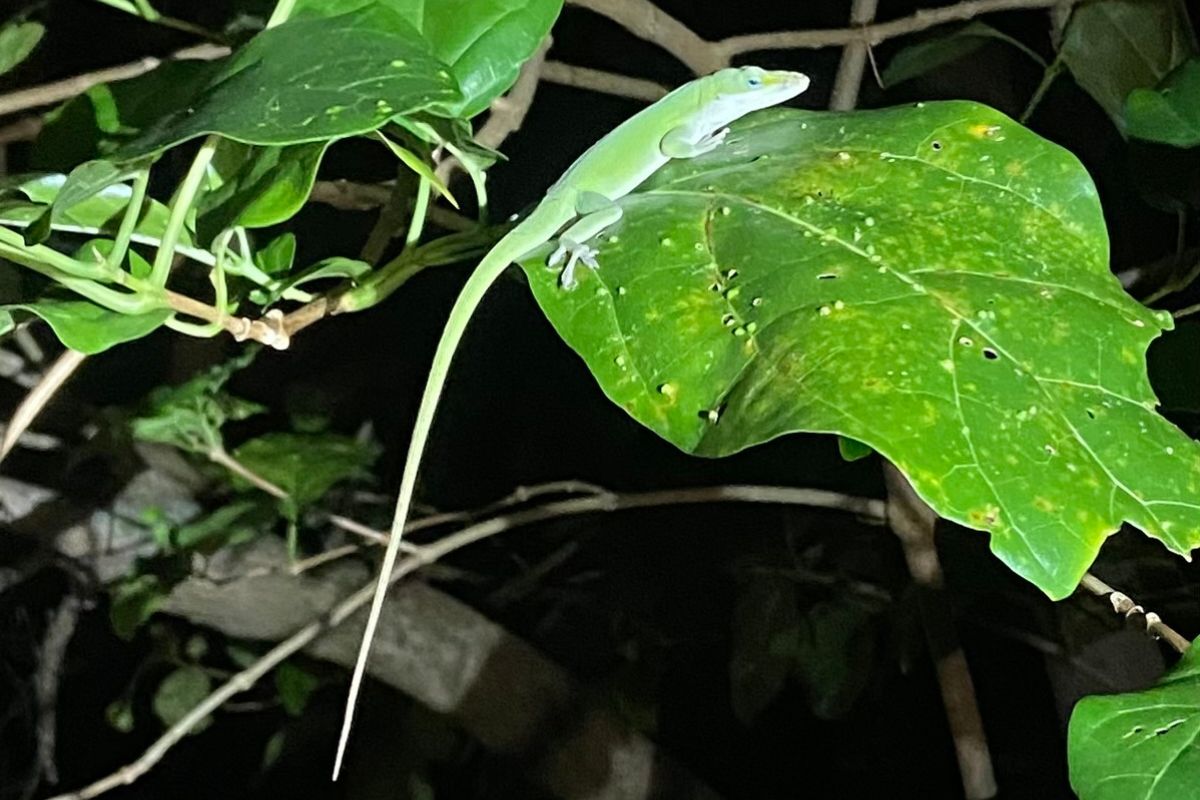UTA researchers find invasive frog on Pacific island
Monday, Apr 07, 2025 • Katherine Egan Bennett : contact

Biologists from The University of Texas at Arlington are the first to discover an invasive frog—the greenhouse frog—in the Marshall Islands, a sprawling Pacific nation of volcanic islands and coral atolls located roughly halfway between Hawaii and Australia.
“Originally from the Caribbean, these frogs are notorious for expanding their habitat by hitching rides in soil, potted plants and agricultural materials,” said Samuel Fisher, a UT Arlington graduate student working under the guidance of biology Professor Matthew Fujita. “We mostly found the frogs on Laura Island, one of the larger islands and home to the main airport, but we confirmed them on other islands as well.”
Related: How this tiny snake could change our view of genetics

The greenhouse frog isn’t the only introduced species raising concerns. The UTA team also studied the green anole, a lizard native to Texas and Oklahoma and commonly found across the southeastern United States. Possibly introduced from Hawaii, the green anole has become widespread on the Marshall Islands’ main island. Researchers found evidence that it may be eliminating the emerald tree skink, a native lizard species.
“The lack of skinks suggests that imported anoles may be outcompeting native species, which could have ripple effects on the islands’ ecosystems,” UTA’s Dr. Fujita said. “Although these frogs and lizards may seem harmless, they can cause major ecological disruptions by displacing native species, altering food webs and potentially spreading diseases—to both animals and humans.”
Related: UT Arlington biologist discovers new species of gecko
Working with local partners like the Marshall Islands’ Ministry of Natural Resources and Commerce Quarantine Division and the Secretariat of the Pacific Regional Environment Program, the UTA team collaborated with scientists from the U.S. Geological Survey to study how the region’s landscape has changed over the past 40 years. Their research included an analysis in shifts in island size, shape, vegetation and, critically, the makeup of reptiles and amphibians.

In addition to their field research, the UTA team provided biosecurity training to local officials to support early detection and control of invasive species. They also worked with partner agencies such as the U.S. Fish and Wildlife Service and the Hawaii Department of Agriculture to encourage awareness and strengthen regional responses to invasive species.
Related: UTA researchers begin quest for rare lizard
“Researching invasive species is incredibly important for all regions, but islands are especially vulnerable, as they often have limited natural predators to balance the threat of new organisms,” Fisher said. “Understanding their impact helps us mitigate potential economic disruptions—from agriculture and livestock to the beaches and wildlife that draw tourism.”
Latest News
- Ice-T shares hard-earned wisdom with UTA studentsDuring a master class with students, the rap legend and TV star spoke candidly about humility, hustle and how he turned early struggles into success
- UTA's 23 patents strengthen UT System's No 3 rankingResearch contributions help boost the UT System’s position among the nation’s top innovators in patent technology
- UTA professor explores healing power of musicInspired by Alzheimer’s-stricken Glen Campbell, UT Arlington’s Rhonda Winegar explores how music therapy can support neurological care
- Drone duel puts UTA's UA tech to the testStudents from universities in three states faced off at Maverick Stadium in a competition focused on precision and innovation
- Ice-T brings his story to UTA’s Maverick Speakers SeriesThe iconic rapper, actor and author will discuss his rise from the streets to stardom
- Four UTA faculty named NAI Senior MembersNational Academy of Inventors recognizes their groundbreaking work in chemistry, engineering and health care






